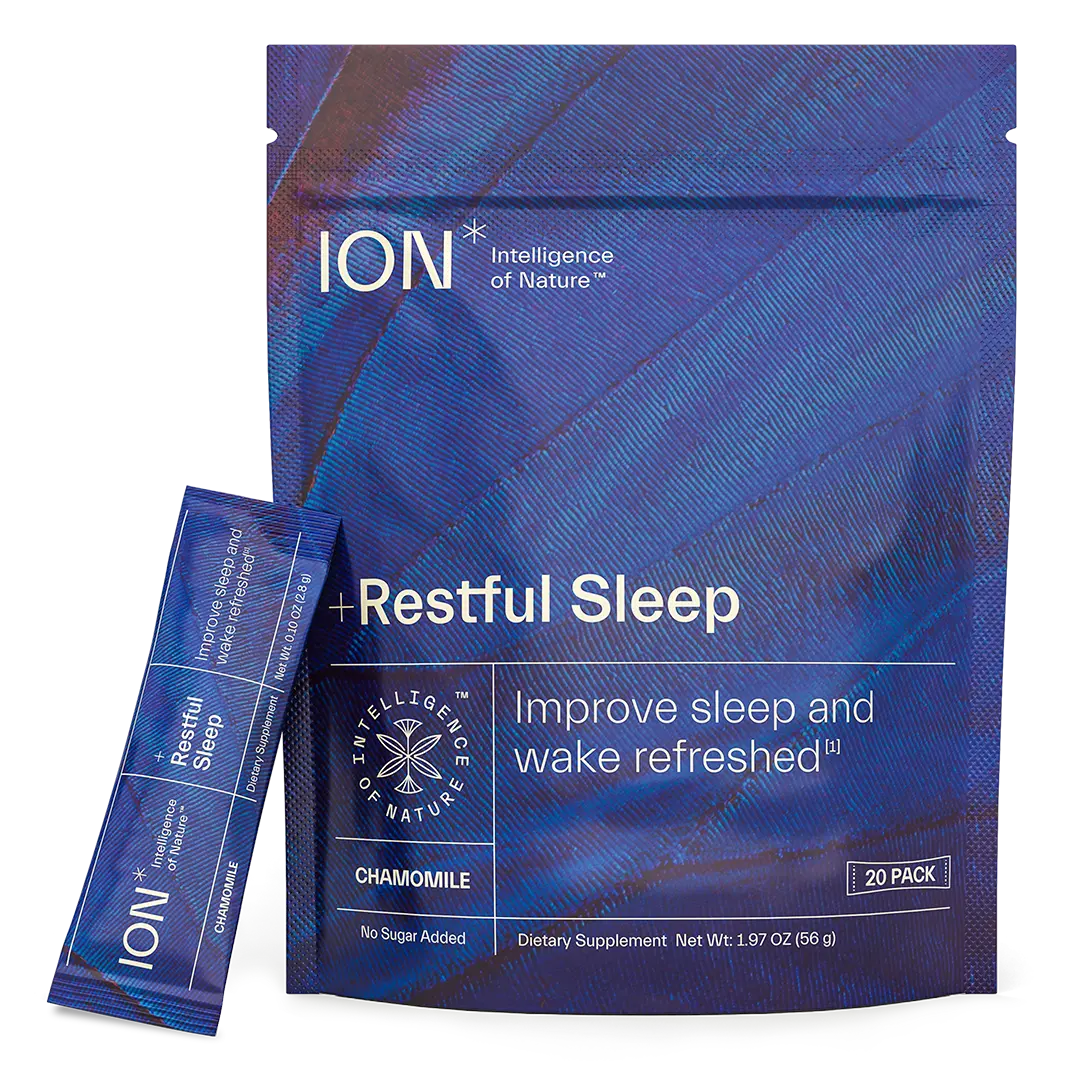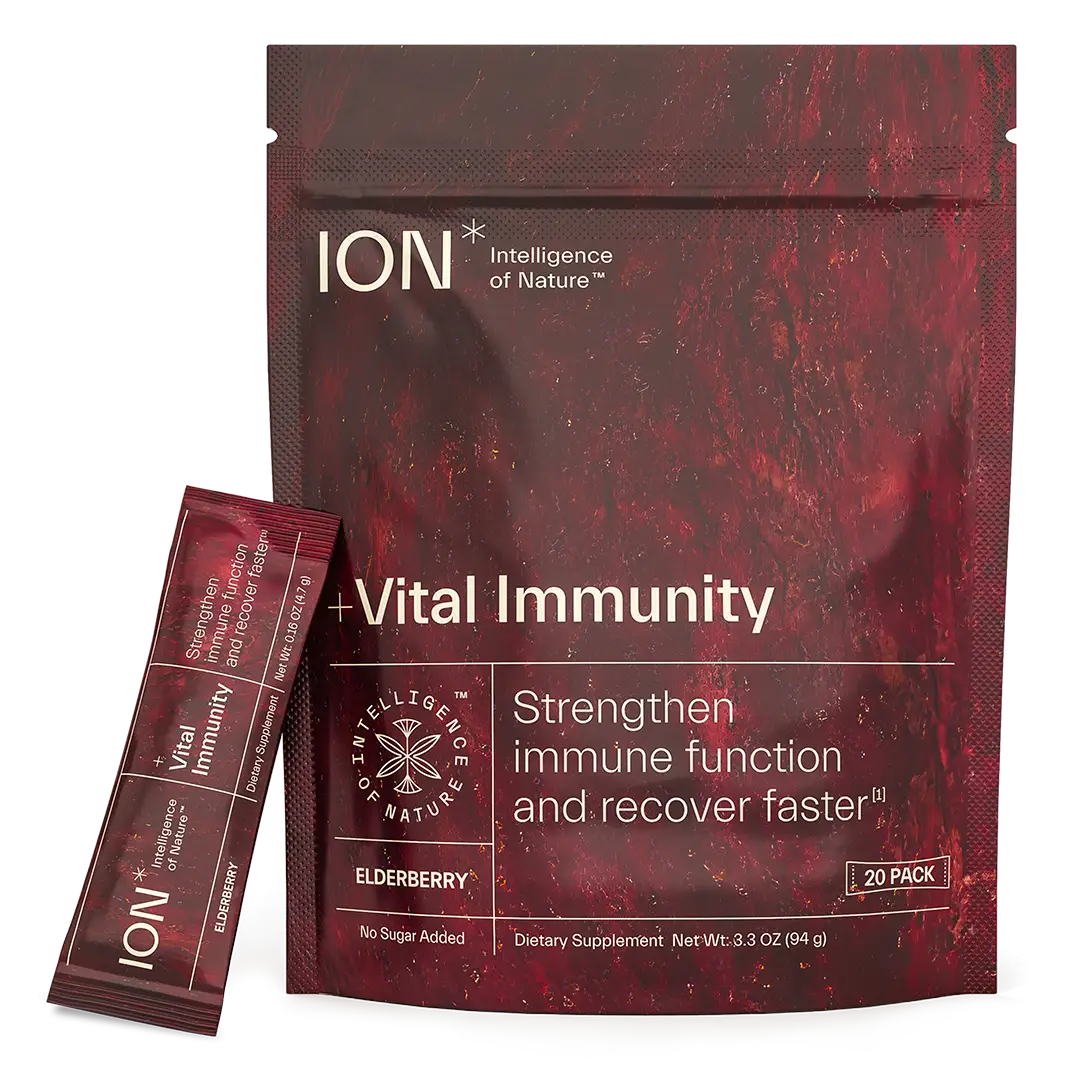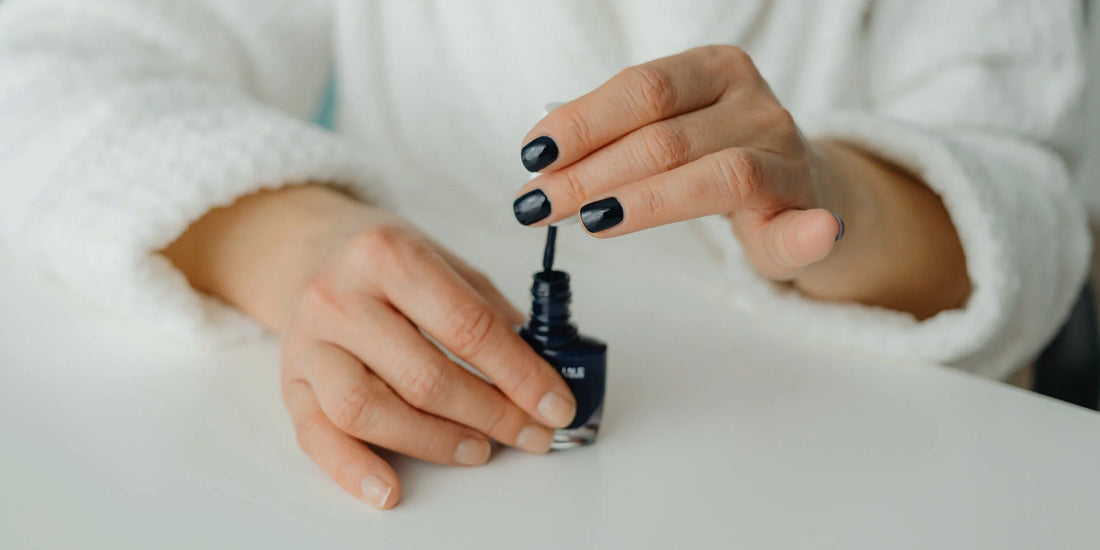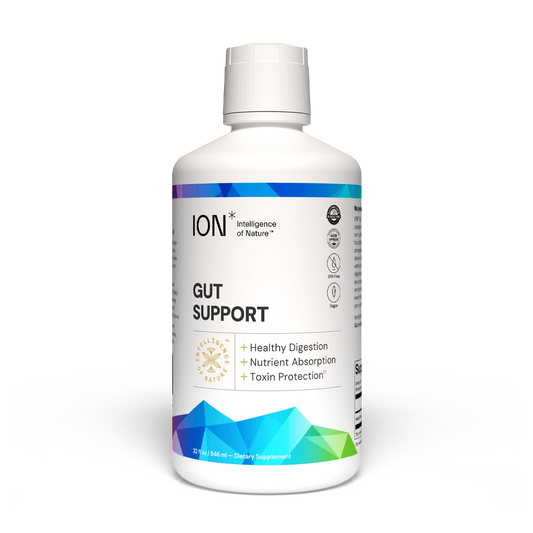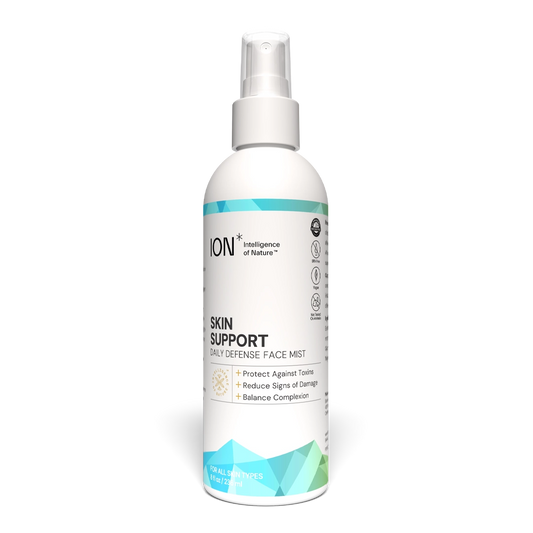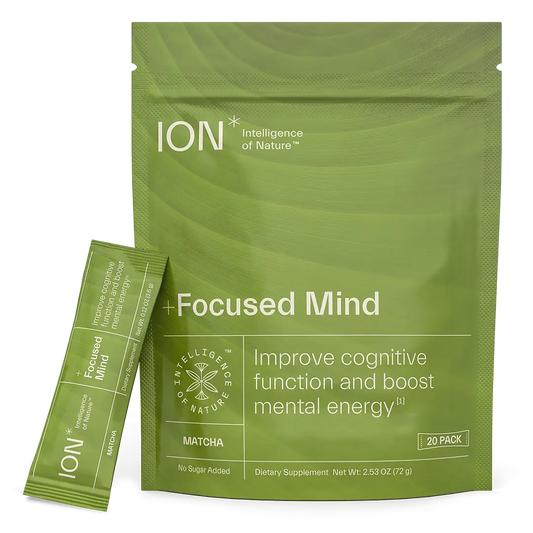We’ve all heard the phrase “beauty is skin deep”, but the products we use to feel our most beautiful sometimes actually do go much deeper than that–and this is not necessarily a good thing.
Unfortunately, in our pursuit of healthy looking skin, we may actually be making our skin unhealthy. That’s because many everyday products from sunscreen, to moisturizers, to cosmetics and more are often created with harmful chemicals that end up directly onto (and ultimately into) our bodies–causing damage, increasing risk of certain cancers, disrupting hormones, and more.
How do toxic chemicals impact our health?
To put our usage of chemical-laden personal care products into context: American women use an average of 12 personal care products that contain 168 different chemicals every day. (Men don’t fare much better, using an average of six personal care products that contain 85 different chemicals daily.)
It’s no wonder the cosmetic industry is absolutely booming–to the tune of over $49 billion in sales in 2022. With how popular and ubiquitous this whole category of products is, it’s shocking to learn that cosmetics legislation has not been changed in the United States since 1938.
In fact, the FDA actually doesn’t have to assess the effectiveness, much less the safety, of cosmetic products before they hit the shelves. The FDA lacks the support or resources to properly recall or suspend dangerous products. Instead, it relies on the personal care products industry to regulate itself regarding any risks their products could pose.
How’s that going? Well, since 2009, 595 cosmetics manufacturers have reported using 88 chemicals, in more than 73,000 products, that have been linked to cancer, birth defects, or reproductive harm.
Thankfully, positive changes are coming. In 2025, for example, California's Toxic-Free Cosmetics Act (Assembly Bill 2762) will take effect and prohibit 24 harmful ingredients from use in cosmetic products.
But there’s still a lot to be done, and a lot of research to be undertaken.
What are the most common toxic ingredients to avoid for our skin?
In the meantime, being knowledgeable about any potentially harmful chemicals found in your skincare and cosmetic products is crucial to keeping you and your family well. The list below includes the ingredients to watch out for.
First up? Fragrance.
Wanting a product to smell nice isn’t the issue here, it’s that “fragrance” as a term has become a catchall companies can use that can encompass a wealth of potentially harmful chemicals that brands don’t have to list in their ingredients. Why? Because “fragrance” can be treated as a “trade secret” which makes it difficult for consumers to identify potential chemicals, allergens, toxins, and irritants in a product. This means many people experience adverse reactions, from headaches and rashes to respiratory issues thanks to the vague definition of “fragrance” found in many products.
Be on the lookout for “fragrance” listed in ingredient lists, and opt for “fragrance free” altogether when possible.
The Big P’s: Parabens and Phthalates.
Commonly found in many cosmetics and skincare products, these two chemicals can spell big problems, even in small doses. Parabens are synthetic preservatives that help extend a product’s shelf life thanks to antimicrobial properties. Phthalates are a group of chemicals that are typically used to enhance texture and flexibility in products (like nail polish and hairspray.) Too bad that these chemicals have been found to be potential endocrine disruptors, meaning they can cause hormonal imbalances, reproductive issues, and increased risk for breast cancer. Research has also found that endocrine disruptors can harm immune system response, making you more susceptible to illness, disease, and pathogenic viruses.
(Also note that phthalates are especially dangerous during prenatal and early postnatal development periods, when neural systems and organs are forming.)
For parabens, look for: propylparaben, butylparaben, isobutylparaben, methylparaben, and polyparaben.
Phthalates can be found in: dibutyl phthalate (DBP), dimethyl phthalate (DMP), diethyl phthalate (DEP).
Another one? Formaldehyde
The chemical we most associate with, well, embalming and funerary processes, is found in beaucoup beauty products as well. It’s commonly found in hair-straightening treatments (aka keratin treatments or “Brazilian blowouts”). Formaldehyde is also a known carcinogen that’s banned in other countries for safety purposes. Some retailers in the States have followed suit, with CVS banning Formaldehyde in 2019.
In addition to being a carcinogen, common hair straightening treatments that use formaldehyde have been linked to hair loss, rashes, blisters, nose bleeds, bleeding gums, and loss of taste and smell.
Want to avoid formaldehyde? Watch out for dmdm hydantoin, imidazolidinyl urea, diazolidinyl urea, quaternium-15, bronopol (2-bromo-2-nitropropane-1,3-diol ), 5-bromo-5-nitro-1,3-dioxane and hydroxymethylglycinate.
Like suds? Not if they’re thanks to 1,4 Dioxane.
(That comma is not a spelling error and this chemical is not something you want in your body.)
This chemical (also referred to as dioxane) helps create suds in common products like shampoo, soap, and detergent, but it can also be found in deodorant, toothpaste, and even hair dye.
The interesting thing about 1,4-dioxane is that it isn’t technically “used” in cosmetics, but instead is a byproduct that occurs when other ingredients are mixed together in manufacturing–ingredients that include detergents, foaming agents, emulsifiers, and solvents that are responsible for getting a good lather.
Regardless of how it makes its appearance, 1,4 dioxane is bad news: the EPA lists it as “likely to be carcinogenic to humans” and the EWG lists it as a known human respiratory toxicant (meaning it is harmful even in small doses).
Be on the lookout for sodium laureth sulfate, peg compounds (usually listed as “peg” followed by a number), polyethylene, polyethylene glycol, polyoxyethylene, and chemicals that end in “eth”, like ceteareth and oleth.
Protect your skin? Yes.
Protect your skin with oxybenzone? No.
Often found in sunscreens and recently banned outright by Hawaii, oxybenzone works by protecting your skin against UVB and UVA rays. However, “the juice is not worth the squeeze” when we take into consideration that recent studies have found that oxybenzone is a likely endocrine-disrupting compound. (Not to mention, it’s also bleaching and killing coral reefs.)
In the future, avoid sunscreens containing oxybenzone and benzophenone-3. There are plenty of safer, effective alternatives.
Like the smokey eye look? Keep your eyes peeled for carbon black.
Recently added to the FDA’s list of banned toxic ingredients, carbon black has still managed to find itself in many cosmetic products–namely, eyeliner, mascara, eyelash glue, etc.
To be fair, some argue that small doses of carbon black (sub 10%) is not a serious health concern. But, many studies are emerging that find carbon black is linked to increased cancer, negative impacts on neurodevelopment, poor lung function, and affected hormone production in vitro. (For additional context, the EWG actually rates carbon black a 10. On a scale of 1 to 10. With 10 being the worst.)
Products containing ingredients such as carbon black, D&C Black No. 2 (CI 77266), acetylene black, channel black, furnace black, lamp black, and thermal black are worth leaving on the shelf.
Sorry, slugging fans, petroleum jelly could be doing more harm than good.
Most people are familiar with this moisturizing agent found in lotions and skincare products like lip balm and makeup remover. Unfortunately, many of those same people don’t know why it may be worth leaving out of their beauty routine altogether.
To be clear, refined petroleum jelly (aka “mineral oil”) is NOT harmful. The problem is that in the United States, most mineral oils are not correctly or properly refined, which leaves the door option for the creation of polycyclic aromatic hydrocarbons–or PHAs, for short. PHAs are a group of 100+ chemical compounds that have been classified as human carcinogens at the worst and potential skin irritants at best.
Products containing ingredients including white petroleum soft paraffin, mineral oil, paraffin oil, white mineral oil, and liquid paraffin could be at risk for PHA exposure.
Up next? Butylated hydroxytoluene and butylated hydroxyanisole. (Or, BTH and BHA.)
These closely related and fairly ubiquitous chemical compounds are used as preservatives in everything from lip and hair products to makeup and sunscreen, from antiperspirants and deodorants to fragrances to creams. These industrial fluids work to prevent both free radical formation and oxidation, which are normally good things. However, the National Toxicology Program and the European Commission on Endocrine Disruption both call out BHA chemicals as possible carcinogens and a “category 1” substance that interferes with hormone production.
If your product has BHA or BHT listed in the ingredients, skip it.
Lastly, ethanolamines are worth a look, too.
These chemicals are found in a wide range of products, from moisturizers to baby sunscreen. Used as foaming agents, cleansers, emulsifiers, and preservatives, common ethanolamines include monoethanolamine (MEA), diethanolamine (DEA), and triethanolamine (TEA).
While the FDA states that there’s no reason for alarm in using these substances, research from the National Toxicology Program (NTP) has found an association between topical application of DEA and other DEA-related ingredients and cancer in laboratory animals. Furthermore, the California Environmental Protection Agency has labeled DEA as a possible carcinogen, thanks to research by the International Agency for Research on Cancer.
So while more studies are needed, it seems like a “better safe than sorry” situation. Be on the lookout for products containing chemicals such as cocamide DEA, DEA-cetyl phosphate, DEA oleth-3 phosphate, lauramide DEA, myristamide DEA, oleamide DEA, TEA-lauryl sulfate, and triethanolamine.
So what can you do to take care of your skin–inside and out?
Protect what protects you with ION* Skin Support.
If you want healthy-looking skin, take care of your skin, so it is healthy. As your largest organ and first line of defense, your skin has a huge job–it is in charge of keeping harmful environmental toxins and pollutants, microbes, and germs out of your body while also guarding against UV rays, facilitating vitamin D production, regulating body temperature, and so much more–even helping your skin stay properly hydrated.
That’s why ION* Skin Support is created to specially work with your skin’s cells to help promote your natural barrier against toxins, improve skin hydration, reinforce cellular connection, lessen signs of skin damage, reduce redness, and support a healthy terrain for a diverse microbiome (Yes, Your skin has a microbiome, too!). This gentle mist also helps to stabilize free radical production and promote an increase in glutathion e, reducing oxidative stress in the body while improving overall complexion.
The best part? ION* Skin Support is one of the easiest skincare products you can incorporate to help boost your skin health, naturally. Just a quick mist on the face, neck, and chest twice daily is all it takes to do the above, while helping your skin to breathe and glow as nature intended.
Ready for your healthiest (and healthiest-looking!) skin?
Try ION* Skin Support today!

